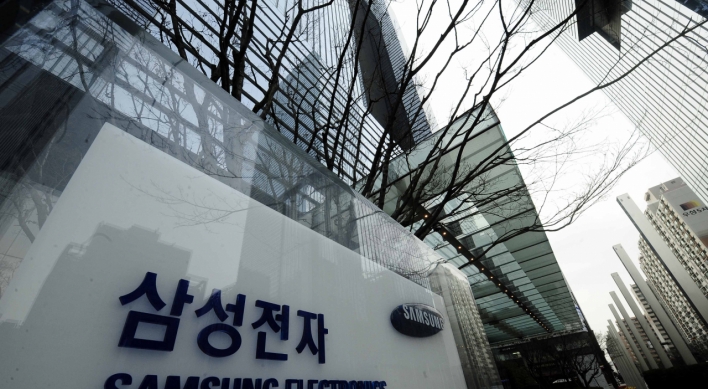South Korea’s corporate profitability worsened in the third quarter from a year earlier as increased commodity prices drove up costs and other expenses, the central bank said Tuesday.
The average ratio of operating profit to sales, a key barometer of profitability, came in at 5.3 percent in the July-September period, down from 7.4 percent in the previous year, the Bank of Korea said in a report based on a survey of 1,522 listed companies.
The result marked the second straight quarterly decline. After reaching 6.3 percent in the January-March period, local firms’ corporate profitability has been trending lower, slowing to 5.5 percent in the April-June period.
The ratio of local companies’ pre-tax net income to sales, another gauge of profitability, stood at 3.1 percent in the third quarter, more than halving from 7.2 percent in the previous year, the BOK said.
The sharp decline came as currency-related net shifted to negative territory. In the third quarter, the Korean won depreciated 8.6 percent on-quarter to the U.S. dollar.
Korean firms’ total assets grew 2.5 percent in the third quarter, accelerating from a 1.5 percent gain in the previous year, but their sales expanded 12.1 percent, slowing from a 14.6 percent rise a year ago, according to the BOK.
The weaker figures come as global uncertainties in the eurozone and the United States are feared to dent the economic growth of the South Korean economy, Asia’s fourth-largest.
The South Korean economy grew 0.7 percent on-quarter in the July-September period, slowing from a 0.9 percent on-quarter growth in the second quarter.
Earlier this month, the BOK revised down its growth estimate for the local economy to 3.8 percent from a 4.3 percent projection made in July.
Meanwhile, the BOK said the interest coverage ratio of local companies also deteriorated from the previous quarter amid worsening corporate profitability.
The average interest coverage ratio, which measures a firm’s capacity to cover financial costs with operating profit, came in at 400.1 percent in the cited period, down from 527.3 percent in the previous year.
The BOK said exporters mostly fared better than domestic-focused firms, indicating that overall corporate growth was driven by bigger companies, but added that the gap between them in terms of revenue growth narrowed from the previous quarter.
Sales by exporters increased 12.3 percent in the third quarter, while non-exporters saw their sales gain 11.9 percent, bringing the gap to 0.4 percentage point from 2.2 percentage point in the previous quarter, according to the BOK.
(Yonhap News)
The average ratio of operating profit to sales, a key barometer of profitability, came in at 5.3 percent in the July-September period, down from 7.4 percent in the previous year, the Bank of Korea said in a report based on a survey of 1,522 listed companies.
The result marked the second straight quarterly decline. After reaching 6.3 percent in the January-March period, local firms’ corporate profitability has been trending lower, slowing to 5.5 percent in the April-June period.
The ratio of local companies’ pre-tax net income to sales, another gauge of profitability, stood at 3.1 percent in the third quarter, more than halving from 7.2 percent in the previous year, the BOK said.
The sharp decline came as currency-related net shifted to negative territory. In the third quarter, the Korean won depreciated 8.6 percent on-quarter to the U.S. dollar.
Korean firms’ total assets grew 2.5 percent in the third quarter, accelerating from a 1.5 percent gain in the previous year, but their sales expanded 12.1 percent, slowing from a 14.6 percent rise a year ago, according to the BOK.
The weaker figures come as global uncertainties in the eurozone and the United States are feared to dent the economic growth of the South Korean economy, Asia’s fourth-largest.
The South Korean economy grew 0.7 percent on-quarter in the July-September period, slowing from a 0.9 percent on-quarter growth in the second quarter.
Earlier this month, the BOK revised down its growth estimate for the local economy to 3.8 percent from a 4.3 percent projection made in July.
Meanwhile, the BOK said the interest coverage ratio of local companies also deteriorated from the previous quarter amid worsening corporate profitability.
The average interest coverage ratio, which measures a firm’s capacity to cover financial costs with operating profit, came in at 400.1 percent in the cited period, down from 527.3 percent in the previous year.
The BOK said exporters mostly fared better than domestic-focused firms, indicating that overall corporate growth was driven by bigger companies, but added that the gap between them in terms of revenue growth narrowed from the previous quarter.
Sales by exporters increased 12.3 percent in the third quarter, while non-exporters saw their sales gain 11.9 percent, bringing the gap to 0.4 percentage point from 2.2 percentage point in the previous quarter, according to the BOK.
(Yonhap News)
-
Articles by Korea Herald





![[KH Explains] No more 'Michael' at Kakao Games](http://res.heraldm.com/phpwas/restmb_idxmake.php?idx=644&simg=/content/image/2024/04/28/20240428050183_0.jpg&u=20240428180321)



![[Grace Kao] Hybe vs. Ador: Inspiration, imitation and plagiarism](http://res.heraldm.com/phpwas/restmb_idxmake.php?idx=644&simg=/content/image/2024/04/28/20240428050220_0.jpg&u=)









![[Herald Interview] Xdinary Heroes shoot for the next level with 'Troubleshooting'](http://res.heraldm.com/phpwas/restmb_idxmake.php?idx=642&simg=/content/image/2024/04/29/20240429050745_0.jpg&u=)